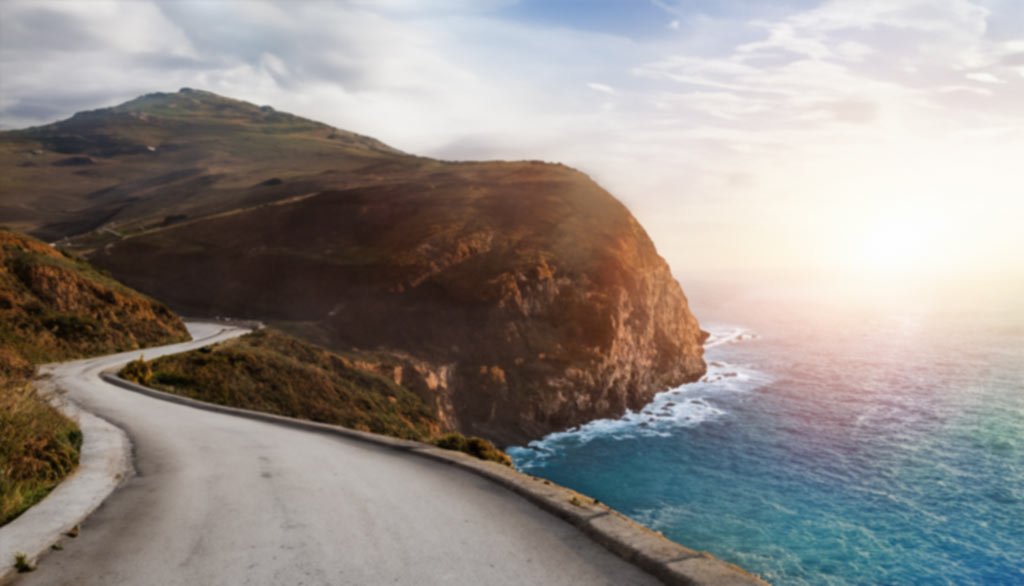Tavronitis is a small village on the Greek island of Crete, 21.7 kilometers (13.49 miles) west of Chania. It sits between the coastline and the White Mountains, near where the Tavronitis River flows into the Cretan Sea. Tavronitis played a significant role in the Battle of Crete during World War II in 1941. The village’s bridge was the scene of fighting on the first day of the German invasion, with paratroopers landing nearby. The Germans assaulted the Maleme airstrip across the Tavronitis River, eventually taking control of the airfield the following day. Scars from the battle can still be seen on the bridge today.
Tavronitis offers a mix of tourist amenities and local life. The village center has traditional cafes, tavernas, bakeries, mini-markets, and a pharmacy. Olive groves, vineyards, and orange trees surround the village. A pleasant pebble and sand beach stretches along the coast 1 kilometer (0.62 miles) from the village. Tourism remains low-key, but visitors appreciate the area’s relaxed atmosphere and scenic beauty. Car rentals in the Chania region typically range from €30 ($32.7, £26.1) to €60 ($65.4, £52.2) per day, depending on the season and vehicle type. Compact or economy cars are the most affordable and practical for navigating the narrow roads in villages like Tavronitis. Renting a small car provides flexibility to explore the area’s beaches, historical sites, and mountain villages at one’s own pace. Parking is usually easier with a smaller vehicle as well.
What is the history of Tavronitis?
Tavronitis is a small village 21.7 kilometers (13.49 miles) west of Chania on the Greek island of Crete. The village got its name from the Tavronitis River that flows nearby and dries up in summer. Tavronitis and the village of Maleme are known for their role in the Battle of Crete during World War II in May 1941. The Tavronitis Bridge was the scene of fighting on the first day of the German invasion, with paratroopers landing near the bridge. Despite heavy losses, the Germans eventually gained control of the Maleme airfield. Tavronitis lies between Crete’s coast and the White Mountains (Lefka Ori). The village center has traditional cafes, taverns, mini-markets, a bakery, a butcher, and a doctor’s office. Olive groves, vineyards, and orange trees surround the village. The beach of Tavronitis is 1 kilometer (0.62 miles) from the village. It is a quiet pebble beach part of a long stretch of coastline from Kolymbari to Stalos. The beach is a nice spot for swimming, especially on calm days, as the north coast of Crete can get wavy.
Tavronitis experiences typical Mediterranean conditions. In late April, temperatures usually range between 13°C (55°F) at night to 20°C (68°F) during the day. Summers are hot and dry, with daytime highs of 29°C (84°F) in July and August. Tavronitis does not cover a large area. The village is inland, while the coastal area, with the beach, a few tavernas, and accommodations, stretches along the seaside. Roads connect Tavronitis to Chania and other nearby villages like Maleme and Kolymbari. Tourism exists in Tavronitis, but it remains fairly low-key compared to other parts of Crete. Visitors enjoy the village’s calm atmosphere and authenticity. Shops and restaurants cater to both locals and tourists. The location of Tavronitis provides a good base for exploring western Crete. The town of Platanias, with more dining, shopping, and nightlife options, is 10 kilometers (6.22 miles) away. Attractions like Balos Lagoon, Falassarna Beach, and Elafonisi are within day-trip distance.
Where is Tavronitis located?
Tavronitis is a village on the northern coast of Crete, 21.7 kilometers (13.49 miles) west of Chania. It lies between the villages of Maleme and Platanias. The coordinates of Tavronitis are 35.5342528 latitude and 23.8148959 longitude. The nearest major airport to Tavronitis is Chania International Airport (CHQ). The village is 39 kilometers (24.24 miles) from this airport. Reaching Tavronitis by car from Chania International Airport takes 36 minutes. Tavronitis stands where the coastal road sends a route heading south over the mountains towards Paleochora. The village is perfectly located between the beautiful northern coastline and Crete’s interior’s scenic White Mountains (Lefka Ori).
How does Tavronitis look on the map?
Find below an image map of Tavronitis town.

What to know before going to Tavronitis?
There are four things to know before going to Tavronitis.
- Common temperatures in Tavronitis during the summer months of June to September can reach highs of 30°C (86°F). Visitors should pack lightweight, breathable clothing and plenty of sun protection. Winters are mild, with average highs of 15°C (59°F) from December to February.
- Tavronitis offers a quiet, relaxing setting perfect for swimming, sunbathing, hiking in the nearby White Mountains, and exploring traditional Cretan villages. The long, pebbly beach provides a scenic setting. A rental car allows easy access to other west Crete destinations like Balos Lagoon.
- Regarding dining, Tavronitis has a selection of traditional Greek tavernas serving locally caught seafood, mezes, and regional specialties like kalitsounia (cheese pastries). Meals range from €10 ($10.9, £8.7) to €20 ($21.8, £17.4) per person. Simple cafes offer Greek coffee and baked goods.
- Visitors will want sturdy sandals or water shoes to walk and swim comfortably because the beach is pebbly. The village roads are paved but uneven in parts, so sensible walking shoes are recommended for strolling around Tavronitis.
What are the facts about Tavronitis?
Listed below are the facts about Tavronitis:
- Historical Significance: Tavronitis is historically important due to its involvement in World War II, notably during the Battle of Crete in 1941. Visitors can explore remnants of this period, including old bunkers and war memorials, providing insights into the island’s wartime past.
- Olive Groves: Extensive olive groves surround Tavronitis, reflecting Crete’s reputation as a major producer of olive oil. The groves contribute to the village’s agricultural economy and scenic countryside, allowing visitors to explore the surroundings.
- Agricultural Fair: Tavronitis holds an annual agricultural fair showcasing the region’s produce, crafts, and livestock. Visitors can sample local delicacies, purchase handmade souvenirs, and learn about traditional farming practices, creating an appreciation for Crete’s agricultural heritage.
What are the nearest attractions to visit in Tavronitis?
Listed below are the nearest attractions to visit in Tavronitis?
- Tavronitis Bridge. Tavronitis Bridge is a historic stone bridge spanning the Tavronitis River, offering scenic views of the surrounding countryside. Visitors can walk or drive across the bridge, appreciating its architectural significance and relaxed setting. It is located 500 meters (1640.5 feet) east of Tavronitis village, making it easily accessible for a stroll or photo.

- Milia Traditional Village. Milia is located in a verdant valley surrounded by mountains, this charming hotel set in buildings from the 15th-century is 5 km from Topolia Gorge and 14 km from the E75 European Route. It is found in the prefecture of Chania, right at the center of Kissamos province. Visitors should read about Milia Traditional Village.

- Maleme Domed Tomb. The Maleme Domed Tomb is an ancient Minoan burial site located near the village of Maleme, 1.6 kilometers (0.99 miles) north of Tavronitis. This archaeological site features a domed chamber believed to date back to the Late Minoan period, offering insights into Crete’s rich history and civilization. Visitors can explore the tomb and learn about Minoan funerary practices and rituals.
- Old Venetian Port of Chania. The Old Venetian Port of Chania is a historic harbor located in Chania, 22.4 kilometers (13.92 miles) east of Tavronitis. This waterfront area is lined with colorful buildings, traditional tavernas, and markets, giving visitors a glimpse into Crete’s maritime heritage. Tourists can stroll along the waterfront promenade, visit iconic landmarks such as the Venetian lighthouse, and enjoy fresh seafood at waterfront restaurants.
- Visit WWII Civilian Memoria. This small memorial honors 12 Tavronitis locals who were killed in retaliation for suspicions that the town was harboring allied troops on July 3, 1941. It had quite a backstory, as told by a local with family members who have been involved. The memorial is set in a park-like setting with olive trees growing in it. It is found right in the village of Tavronitis.

- Hike in the White Mountains. If you’re up for an adventure, be sure to hike in the White Mountains. The scenic trails and views are absolutely breathtaking, and you’ll definitely have a memorable experience. You can see all sorts of Cretan wildlife, including birds, geckos, plants, and more. The mammals of Lefka Ori reach an impressive number of 32 species.
What are the best places to eat and drink in Tavronitis?
Listed below are the best places to eat and drink in Tavronitis.
- Estia Bar Restaurant. Estia Bar Restaurant is located within Tavronitis village, offering traditional Greek cuisine in a casual dining atmosphere. Dishes available include souvlaki, moussaka, and Greek salads, showcasing the flavors of the Mediterranean. Prices range from €10 ($10.9, £8.7) to €15 ($16.35, £13.05) per dish, making it an affordable option for travelers seeking authentic Greek dining experiences.
- Black Lantern. Black Lantern is a family-owned taverna 2.7 kilometers (1.68 miles) from Tavronitis, specializing in seafood and grilled dishes. Visitors can enjoy freshly caught fish, grilled octopus, and traditional Cretan meze plates. The restaurant offers a cozy ambiance and outdoor seating, perfect for enjoying warm evenings. Prices at Black Lantern range from €15 ($16.35, £13.05) to €20 ($21.8, £17.4) per main course, catering to both budget-conscious diners and those looking for a special culinary treat.
- Anemomylos Taverna. Anemomylos Taverna is 1.2 kilometers (0.75 miles) from Tavronitis, overlooking olive groves and the Cretan countryside. The taverna specializes in homemade Cretan dishes, including lamb kleftiko, stuffed vine leaves, and fava bean dip. Guests can dine al fresco on the taverna’s terrace, enjoying panoramic views of the surrounding landscape. Prices at Anemomylos Taverna range from €12 ($13.08, £10.44) to €18 ($19.62, £15.66) per dish, offering good value for traditional Cretan cuisine.
What are the best beaches to visit in Tavronitis?
Listed below are the top beaches to visit in Tavronitis.
- Tavronitis Beach. Tavronitis Beach is the nearest beach to the village, located 1.2 kilometers (0.75 miles) south of Tavronitis. This beach features a mix of sand and pebbles, with clear waters ideal for swimming and snorkeling. Visitors can relax on sun loungers and umbrellas available for rent, enjoying views of the surrounding coastline and hills.
- Livadia Beach. Livadia Beach is 17.8 kilometers (11.06 miles) west of Tavronitis, offering a quieter and more secluded atmosphere than other nearby beaches. The beach is known for its soft golden sand and shallow waters, making it suitable for families with children. Facilities such as beach bars and tavernas are available nearby, providing refreshments and snacks for beachgoers.
- Platanias Beach. Platanias Beach is located 8.4 kilometers (5.22 miles) east of Tavronitis, near the popular resort town of Platanias. This long sandy beach has hotels, restaurants, and water sports facilities, catering to tourists seeking a lively beach experience. Visitors can enjoy activities like jet skiing, parasailing, beach volleyball, and nightlife along the waterfront promenade.
- Gerani Beach. Gerani is a small beach village located right in the middle of Maleme and Platanias, 13 kilometers west of Chania. It is located in a lush valley with olive and citrus trees. Gerani’s beach is 2.5 kilometers long and boasts beautiful sand and sparkling water. Many tourist attractions are located near the shore, making it perfect for family vacations. Umbrellas, showers, beach bars, water sports activities, and lifeguards are available. There are some tamarisk trees near the beach that provide shade. If you want to be alone, there are certain places along the shore that are less crowded and unorganized.
- Rapaniana Beach. Rapaniana’s long beach is 20 kilometers west of Chania and 4 kilometers east of Kolymbari. It is only a small section of the enormous coastline that stretches from Peninsula Rodopos to Chania. The beach, which is sandy and pebbly in sections, is a great option for travelers, especially when the weather is calm). It’s immaculate and close to all of the essential tourist attractions. Umbrellas, showers, and a lifeguard tower are available. The protected loggerhead sea turtle breeds in Rapaniana and its neighboring beaches.
What are the best places to stay in Tavronitis?
Listed below are the top places to stay in Tavronitis.
- Lycasti Maisonettes. Lycasti Maisonettes is a hotel in Tavronitis village that offers self-catering accommodation in traditional Cretan-style apartments. Each maisonette features a fully equipped kitchenette, a private balcony or terrace, and access to a communal swimming pool. Prices for a one-bedroom maisonette start from €60 ($65.4, £52.2) per night, providing affordable options for families and couples.
- Villa Rita Apartments. Villa Rita Apartments is within walking distance of Tavronitis Beach, offering spacious apartments with modern amenities. Guests can enjoy air-conditioned rooms, free Wi-Fi, and private balconies overlooking the surrounding gardens. Prices for a studio apartment start from €50 ($54.5, £43.5) per night, making it a budget-friendly choice for travelers seeking comfort and convenience.
- Theros Hotel. Theros Hotel is 700 meters (2296.7 feet) from Tavronitis village, offering comfortable rooms with sea or mountain views. The hotel features a swimming pool, sun terrace, and on-site restaurant serving traditional Greek cuisine. Prices for a double room with breakfast included start from €80 ($87.2, £69.6) per night, providing good value for travelers looking for a relaxing stay near the beach. Fourthly, Hotel Antilia Apartments is 450 meters (1476.45 feet) east of Tavronitis. The hotel offers spacious apartments with kitchenettes, private balconies, and access to a swimming pool. Prices for a one-bedroom apartment start from €70 ($76.3, £60.9) per night, catering to families and groups seeking self-catering accommodation.
- Irinoula Dreams. Irinoula Dreams is a family-run hotel located in the village of Kamisiana, 1.2 kilometers (0.75 miles) east of Tavronitis. The hotel offers cozy rooms with traditional décor, complimentary breakfast, and a shared courtyard garden. A double room price starts from €45 ($49.05, £39.15) per night, providing budget-friendly accommodation options for travelers exploring the western coast of Crete.
How is the nightlife in Tavronitis?
Tavronitis has a very limited nightlife scene compared to larger towns and resorts on Crete. It does not have many bars, clubs, or venues for drinking and dancing late into the night as a small village. The handful of tavernas and cafes in Tavronitis serve drinks and light snacks but primarily cater to a family-friendly crowd looking to enjoy a relaxed evening meal or coffee. There may be some smaller bars, but nothing on a large scale. Visitors need to go to busier cities like Chania, Rethymno, or Heraklion for a more lively nightlife experience with plenty of bars and clubs where they can drink and dance. Tavronitis remains a fairly quiet village better suited to those preferring a relaxed atmosphere after sundown versus a pumping party scene.
What are the best bars in Tavronitis?
Listed below are the best bars in Tavronitis:
- New Planet Cafe: New Planet Cafe is a lively bar 8.8 kilometers (5.47 miles) from Tavronitis village, offering a relaxed atmosphere and outdoor seating. The bar serves a variety of cocktails, beers, and wines, focusing on refreshing drinks perfect for warm summer evenings. Prices for drinks range from €5 ($5.45, £4.35) to €10 ($10.9, £8.7), making it an affordable option for enjoying drinks with friends or family.
- Social Cocktail Bar Platanias: The Social Cocktail Bar Platanias is situated 8.6 kilometers (5.34 miles) east of Tavronitis, near the popular resort town of Platanias. The bar specializes in craft cocktails made with premium spirits and fresh ingredients, attracting a trendy and cosmopolitan crowd. Guests can enjoy classic cocktails like mojitos, margaritas, and cosmopolitans, as well as signature creations inspired by Greek flavors. Prices for cocktails start from €8 ($8.72, £6.96) to €15 ($16.35, £13.05) each, offering a sophisticated drinking experience with panoramic views of the sea.
- Plus Rock N Rose: Plus Rock N Rose is a stylish bar located 8.6 kilometers (5.34 miles) from Tavronitis, known for its eclectic décor atmosphere. The bar offers an extensive selection of beers, ciders, and spirits, catering to diverse tastes and preferences. Its signature drink is the “Rock N Rose Martini,” a fusion of vodka, elderflower liqueur, and fresh rose petals. Prices for drinks vary, with beers starting from €3 ($3.27, £2.61) and cocktails ranging from €7 ($7.63, £6.09) to €12 ($13.08, £10.44) each, providing options for every budget and occasion.
What are the Hiking Routes for Tavronitis?
There are four main hiking routes for Tavronitis. An easy hike for families starts from the village of Vouves, 6.1 kilometers (3.79 miles) southeast of Tavronitis. This 5-kilometer (3.11-mile) loop trail passes by Crete’s oldest olive tree, estimated to be 3,500 to 5,000 years old. The longer and more challenging Agia Irini Gorge hike can be accessed from Tavronitis. This 7.5 kilometers (4.66 miles) trail through the gorge takes 3 to 4 hours and involves some steep sections, making it difficult in parts. Experienced hikers can attempt the strenuous Samaria Gorge hike from the Omalos plateau, 43.8 kilometers (27.22 miles) south of Tavronitis. It is one of Europe’s most famous gorge walks at 16 kilometers (9.95 miles) long. Day hikes into the surrounding White Mountains offer various routes from easy to extremely difficult, with some trails suitable only for very fit and experienced trekkers. Guides or proper planning are highly advisable for going into these rugged mountains near Tavronitis.
Is Tavronitis safe?
Yes, Tavronitis is safe. Tavronitis maintains an authentic working village character rather than being solely focused on tourism. The permanent local population provides a sense of community that can deter criminal activity. The village does not offer a wild nightlife scene that sometimes contributes to disruptive behavior and petty crimes in more heavily trafficked resort towns. Its low-key seaside setting and limited evening entertainment options create a family-friendly, relaxed vibe. Tavronitis’ location on the outskirts of major urban centers like Chania likely means it does not experience issues like pickpocketing, bag snatching, and other opportunistic street crimes that afflict some popular city destinations, but basic precautions are still advisable for visitors as in any travel locale.
What is the best season to visit Tavronitis?
The best season to visit Tavronitis is June through September. The warm, sunny weather and full range of activities and amenities available during this peak season make it ideal for a holiday. Tavronitis enjoys extremely pleasant summer temperatures, with average daily highs of 30°C (86°F). The near-perfect beach weather lets visitors fully experience the village’s scenic pebbly shores and crystal-clear waters. All restaurants, shops, hotels, and recreational facilities in Tavronitis are open and operating during summer to accommodate tourists. The options for dining, supplies, accommodation, and exploring the surrounding areas are plentiful. The long sunny days of summer are perfect for enjoying outdoor pursuits like hiking the nearby White Mountains, discovering inland villages, or taking day trips to famous Cretan beaches like Balos Lagoon and Elafonissi. Conditions are ideal for making the most of Tavronitis’ location.
Do you need to book in advance to visit Tavronitis?
Yes, visitors need to book in advance to visit Tavronitis. Tavronitis hosts a relatively small number of hotels, villas, and apartment rentals compared to larger Cretan resorts. Rooms and properties get reserved quickly once the high season starts. Many of the accommodations in Tavronitis are smaller, family-run establishments with only a handful of units each. These can sell out early for the most desirable summer dates. Booking ahead ensures visitors have the widest choice of properties and room types to fit their budgets and preferences. Waiting too long risks sellouts or having to pay premium prices.
Booking a rental car in advance for a Tavronitis visit is highly advisable. Having transportation allows visitors to explore the village’s surroundings at their leisure – the scenic mountain villages, Balos Lagoon, Elafonissi Beach, and more. Buses run infrequently outside major routes. A car also provides flexibility for stocking up on supplies and gives independence from taxi fares. Booking early is key for securing vehicles during the busy months.
How to get to Tavronitis?
There are a few options to get to Tavronitis. These are by car, taxi and bus.
By Car
Driving through the streets of Tavronitis is a wonderful way to experience the charm of the village. There are plenty of parking spots, so you don’t have to worry about finding a place to leave your car. You can book a rental car in Chania since it isn’t too far from Tavronitis. The whole trip will only take 19 minutes and you can simply follow the road signs going to the village.
By Taxi
Another way you can reach Tavronitis is by taxi. There are plenty of taxis waiting in Chania, so you can just hail one and get to your destination quickly and easily. You can expect to pay around 21 EUR and the trip will also take 19 minutes. However, if you’d want to be picked up from the airport directly, booking a taxi transfer in advance is a better option.
By Bus
If you’re on a budget, then the best way to get to Tavronitis is by bus. There are buses that go from Chania to Tavronitis every hour, so you won’t have to wait long for your ride. The whole trip will take around 32 minutes. To reach Tavronitis, just board a bus from KTEL Chania Station. There are direct buses that go to Tavronitis.
What is the best vehicle for visiting Tavronitis?
A medium-sized car is the best vehicle for visiting Tavronitis. Larger cars are unnecessary for this modest village, while smaller economy models may be too cramped for longer drives around western Crete. Tavronitis’ village roads are narrow in parts, making compact maneuverability important when driving and parking. A mid-size car provides enough agility without being too big and cumbersome. A medium car rental offers ample space for passengers and luggage if one plans day trips from their Tavronitis base. The trunk capacity is handy for packing beach gear, hiking supplies, or purchases from local markets.
Crete’s mountainous interior means visitors will encounter winding roads and steep grades when venturing inland from the coast. A mid-size model provides better horsepower and handling than the smallest economy-class vehicles. Popular car rental services in Crete, like Rental Center Crete, offer affordable rates on models perfectly suited for Tavronitis. The options like the Nissan Qashqai, Toyota RAV4, and Volkswagen Golf blend size, comfort, and performance.
Can you rent a car to go to Tavronitis?
Yes, visitors can rent a car to go to Tavronitis. Renting a vehicle is one of the best ways to reach this seaside destination as it provides flexibility and independence compared to relying solely on limited public transportation options. Major rental companies like Rental Center Crete have offices at Chania International Airport for maximum convenience.
Having a rental car in Tavronitis allows one to explore the village and surrounding areas at one’s own pace. It enables easy day trips to visit other acclaimed spots in this region, like Balos Beach, Elafonissi Beach, or the trailheads of gorges like Samaria and Agia Irini — all within a reasonable driving distance. A rental provides the freedom to experience inland Cretan villages, vineyards, and olive groves without being confined to rigid bus schedules.
What are the factors to consider before renting a car in Crete?
Listed below are the factors to consider before renting a car in Crete:
- Insurance: Before reserving a car rental in Crete, it is important to consider insurance coverage. Check if the rental company provides comprehensive insurance that covers damages, theft, and liability. It is recommended that the terms and conditions of the insurance policy be carefully reviewed to understand the coverage and any additional costs or deductibles involved.
- Driver’s Age: Some car rental companies may have age restrictions or additional fees for drivers under a certain age. Verify the minimum age requirement and any surcharges that may apply.
- Driver’s Gender: Certain rental companies may have specific policies regarding male or female drivers, so it is essential to check if there are any gender restrictions or additional requirements.
- Car Type: Consider the type of car that suits the needs and preferences. Determine the size, features, and specifications required for the trip. Whether one needs a compact car for easy maneuverability or a larger vehicle for more space, selecting the right car type will ensure a comfortable and convenient experience.
- Documents needed for renting a car: Ensure all necessary documents are available for the car rental. This includes a valid driver’s license, passport or identification, and a credit card for the reservation and security deposit. Check the rental company’s specific requirements to avoid any last-minute complications.
How much does a car rental in Crete cost?
Car rental in Crete costs vary depending on the number of passengers, itinerary, car type, location, and duration. The average price of renting a vehicle in Crete is €30 ($32.7, £26.1) to €40 ($43.6, £34.8) per day. A car rented for a whole week will cost an average of €250 ($272.5, £217.5), while renting for the weekend will cost €78 ($85.02, £67.86). Affordable car rentals in Rental Center Crete vary depending on the car type.
What is the contribution of Tavronitis to Crete Tourism?
Tavronitis contributes to Crete Tourism in four ways. Tavronitis’ primary tourism draw is as a low-key seaside base for visitors exploring the beaches and mountain villages of western Crete. It has several hotels and rental accommodations but no major resorts or entertainment facilities, driving high visitor volumes. Data shows the coronavirus crisis severely impacted Crete’s tourism in 2020, with arrivals dropping 65% compared to 2019. Tavronitis likely saw an even sharper decline when travel restrictions limited international arrivals as a village catering mainly to independent travelers. Most recent data indicates that tourism to Crete began rebounding in 2023 but has not recovered to pre-pandemic levels yet. Tavronitis’ reliance on this industry means it is still regaining its footing after the disruptions. Rather than significant numbers, Tavronitis’ contribution lies in providing an authentic, low-key base for exploring Crete’s natural attractions at a relaxed pace. Its lack of mass tourism preserves a traditional village character comprising part of the island’s appeal to discerning visitors.
What are the movies about Tavronitis?
Listed below is the movie about Tavronitis:
- The Cretan Runner: The Cretan Runner is a historical drama based on the true story of George Psychoundakis, a Cretan resistance fighter during World War II. The movie portrays Tavronitis as a strategic location for the resistance movement, with scenes depicting guerrilla warfare and clandestine operations against Axis forces. Tavronitis represents the resilience and courage of the Cretan people in the face of occupation and oppression.
Why is Tavronitis considered an archaeological site?
Tavronitis is not considered an archaeological site. Tavronitis is located near the site of the Battle of Crete during World War II, where German forces invaded and eventually occupied the island in 1941. Remnants like bomb craters and a German military cemetery exist in the vicinity as reminders of this event. Nearby Maleme, the next village east of Tavronitis, contains monuments and the former airfield commemorating its role as one of the battlegrounds during the 1941 invasion, but these historical points of interest are outside of Tavronitis proper. As a traditional Cretan village, Tavronitis likely has older churches, homes, and infrastructure dating back centuries, typical of long-inhabited areas of Greece, but there is no evidence that it holds the preserved ruins, artifacts or archaeological designations that would qualify it as a major historical site.
Is Tavronitis a UNESCO World Heritage Site?
No, Tavronitis is not a UNESCO World Heritage Site. Tavronitis is a small, present-day village on the northern coast of Crete. There are no references to it possessing cultural or natural heritage of outstanding universal value that would merit inscription on the UNESCO World Heritage List. Tavronitis lies near sites of historical significance, like the World War II battlegrounds around Maleme, but the village does not seem to contain any preserved archaeological ruins, architectural marvels, or other attributes that UNESCO deems exceptional global importance and outstanding universal value. Its role appears to be that of a modest, working Cretan village rather than an elite heritage destination.
Last updated on .








